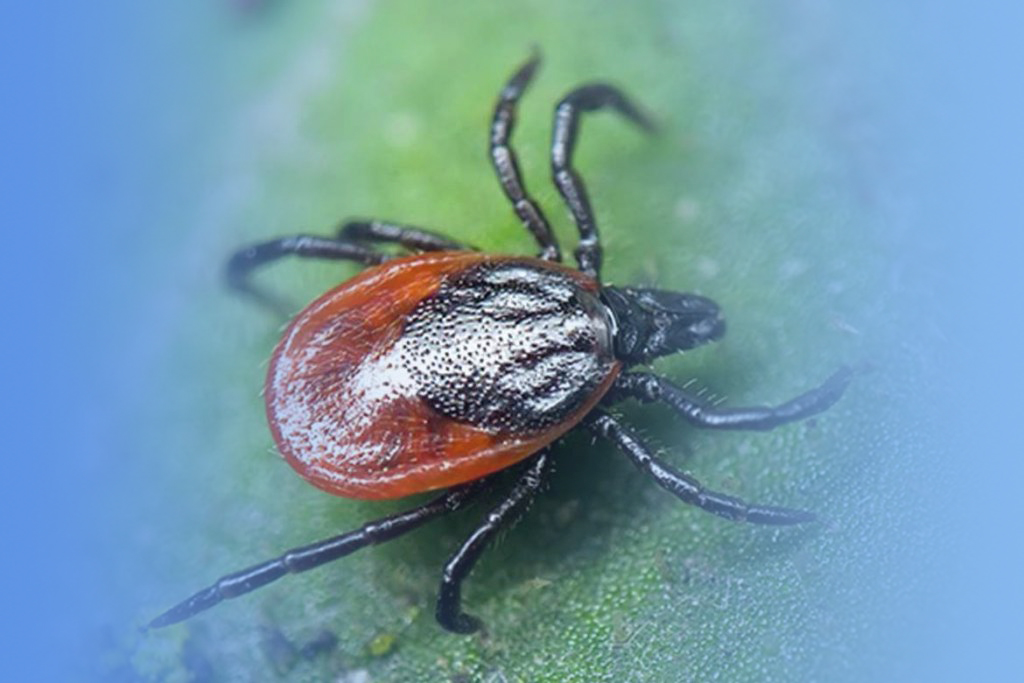[1] Majerová K, Gutiérrez R, Fonville M,et al. Hedgehogs and squirrels as hosts of zoonotic Bartonella species[J]. Pathogens,2021,10(6):686. DOI:10.3390/pathogens10060686.
[2] Krügel M, Król N, Kempf VAJ,et al. Emerging rodent-associated Bartonella:A threat for human health?[J]. Parasit Vectors,2022,15(1):113. DOI:10.1186/s13071-022-05162-5.
[3] Okaro U, Addisu A, Casanas B,et al. Bartonella species,an emerging cause of blood-culture-negative endocarditis[J]. Clin Microbiol Rev,2017,30(3):709-746. DOI:10.1128/CMR. 00013-17.
[4] Noguchi H. The etiology of verruga Peruana[J]. J Exp Med,1927,45(1):175-189. DOI:10.1084/jem.45.1.175.
[5] Pitassi LHU, de Paiva Diniz PPV, Scorpio DG,et al. Bartonella spp. bacteremia in blood donors from Campinas,Brazil[J]. PLoS Negl Trop Dis,2015,9(1):e0003467. DOI:10.1371/journal.pntd.0003467.
[6] Okujava R, Guye P, Lu YY,et al. A translocated effector required for Bartonella dissemination from derma to blood safeguards migratory host cells from damage by co-translocated effectors[J]. PLoS Pathog,2014,10(6):e1004187. DOI:10. 1371/journal.ppat.1004187.
[7] Zhang ZX, Li YF. Research progress on bartonellosis [J]. Anim Husb Vet Med,2012,44(11):91-95. (in Chinese)张振兴,李玉峰. 巴尔通体病研究进展[J]. 畜牧与兽医,2012,44(11):91-95.
[8] Zuo SY. Detection and isolation of Bartonella spp. in rodents in Heilongjiang Province of China[D]. Changsha:Central South University,2012. (in Chinese)左双燕. 我国黑龙江林区鼠型动物巴尔通体感染调查与分离鉴定[D]. 长沙:中南大学,2012.
[9] Li DM, Zhang JZ, Liu QY. Progress of research progress on Bartonella and related diseases in China[J]. Chin J Zoonoses,2008,24(8):762-765,770. DOI:10.3969/j.issn.1002-2694. 2008.08.019.(in Chinese)栗冬梅,张建中,刘起勇. 中国巴尔通体与相关疾病的研究进展[J]. 中国人兽共患病学报,2008,24(8):762-765,770. DOI:10.3969/j.issn.1002-2694.2008.08.019.
[10] Chang CC, Chomel BB, Kasten RW,et al. Bartonella spp. isolated from wild and domestic ruminants in north America[J]. Emerg Infect Dis,2000,6(3):306-311. DOI:10.3201/eid0603. 000313.
[11] An CH, Chen BB, Lyu W,et al. Bartonella species investigated among rodents from Shaanxi Province of China[J]. Biomed Environ Sci,2020,33(3):201-205. DOI:10.3967/bes2020.028.
[12] Hao LL, Yuan DB, Guo L,et al. Molecular detection of Bartonella in Ixodid ticks collected from yaks and plateau pikas (Ochotona curzoniae) in Shiqu county,China[J]. BMC Vet Res,2020,16(1):235. DOI:10.1186/s12917-020-02452-x.
[13] Li DM, Hou Y, Song XP,et al. High prevalence and genetic heterogeneity of rodent-borne Bartonella species on Heixiazi Island,China[J]. Appl Environ Microbiol,2015,81(23):7981-7992. DOI:10.1128/AEM.02041-15.
[14] Liu HX, Han TW, Liu WJ,et al. Epidemiological characteristics and genetic diversity of Bartonella species in rodents from southeastern China[J]. Zoonoses Public Health,2022,69(3):224-234. DOI:10.1111/zph.12912.
[15] Rao HX, Li SJ, Lu L,et al. Genetic diversity of Bartonella species in small mammals in the Qaidam Basin,western China[J]. Sci Rep,2021,11(1):1735. DOI:10.1038/s41598-021-81508-w.
[16] Yao XY, Liu H, Sun J,et al. Epidemiology and genetic diversity of Bartonella in rodents in urban areas of Guangzhou,Southern China[J]. Front Microbiol,2022,13:942587. DOI:10.3389/fmicb.2022.942587.
[17] Lu X, Peng Y, Geng YY,et al. Co-localization of sampling and sequencing for zoonotic pathogen identification in the field monitoring using mobile laboratories[J]. China CDC Wkly,2022,4(12):259-263. DOI:10.46234/ccdcw2022.059.
[18] Song XP, Li DM, Jia LJ,et al. Investigation of Bartonella infection in small mammals in Inner Mongolia,China [J]. Chin J Vector Biol Control,2015,26(3):233-237. DOI:10.11853/j.issn.1003.4692.2015.03.004.(in Chinese)宋秀平,栗冬梅,贾丽军,等. 内蒙古小型兽类巴尔通体感染情况调查[J]. 中国媒介生物学及控制杂志,2015,26(3):233-237. DOI:10.11853/j.issn.1003.4692.2015.03.004.
[19] Jin MZ, Hao GF, Wang J,et al. Investigation on natural infection of rodent-borne pathogens in rodent populations in Urad port area,Inner Mongolia,China in 2015[J]. Chin J Vector Biol Control,2018,29(3):296-297. DOI:10.11853/j.issn. 1003. 8280.2018.03.020.(in Chinese)靳木子,郝广福,王静,等. 内蒙古乌拉特口岸地区2015年鼠类携带病原体情况调查[J]. 中国媒介生物学及控制杂志,2018,29(3):296-297. DOI:10.11853/j.issn. 1003. 8280. 2018. 03.020.
[20] Wang N, Jin MZ, Jiang LF,et al. Pathogen investigation of rodents in the western ground crossings of Inner Mongolia[J]. Chin J Dis Control Prev,2020,24(6):716-722. DOI:10.16462/j.cnki.zhjbkz.2020.06.019.(in Chinese)王宁,靳木子,蒋兰芬,等. 内蒙古西部口岸地区鼠类及其携带病原体调查[J]. 中华疾病控制杂志,2020,24(6):716-722. DOI:10.16462/j.cnki.zhjbkz.2020.06.019.
[21] Xu RG. Fauna of Inner Mongolia, Volume 5[M]. Hohhot: Inner Mongolia University Press, 2016:. 旭日干.内蒙古动物志(第五卷)[M].呼和浩特:内蒙古大学出版社, 2016:.
[22] Saengsawang P, Kaewmongkol G, Inpankaew T. Molecular detection of Bartonella spp. and hematological evaluation in domestic cats and dogs from Bangkok,Thailand[J]. Pathogens,2021,10(5):503. DOI:10.3390/pathogens10050503.
[23] Harrus S, Bar-Gal GK, Golan A,et al. Isolation and genetic characterization of a Bartonella strain closely related to Bartonella tribocorum and Bartonella elizabethae in Israeli commensal rats[J]. Am J Trop Med Hyg,2009,81(1):55-58. DOI:10.4269/ajtmh.2009.81.55.
[24] Li DM, Yu DZ, Liu QY,et al. Study on Bartonella infection using molecular biological diagnostic techniques from China[J]. Chin J Epidemiol,2004,25(7):602-606. DOI:10.3760/j.issn:0254-6450.2004.07.015.(in Chinese)栗冬梅,俞东征,刘起勇,等. 用分子生物学技术诊断巴尔通体感染[J]. 中华流行病学杂志,2004,25(7):602-606. DOI:10.3760/j.issn:0254-6450.2004.07.015.
[25] Ye X, Yao ML, Li GW. Introduction to experimental detection technology of Bartonella[J]. Chin J Zoonoses,2007,23(11):1160-1162. DOI:10.3969/j.issn.1002-2694.2007.11.025.(in Chinese)叶曦,姚美琳,李国伟. 巴尔通体实验检测技术简介[J]. 中国人兽共患病学报,2007,23(11):1160-1162. DOI:10.3969/j.issn.1002-2694.2007.11.025.
[26] Zeaiter Z, Liang Z, Raoult D. Genetic classification and differentiation of Bartonella species based on comparison of partial ftsZ gene sequences[J]. J Clin Microbiol,2002,40(10):3641-3647. DOI:10.1128/JCM.40.10.3641-3647.2002.
[27] Chen YF, Jin MZ, Bai X. Investigation on rodents and their pathogens in western port area of Inner Mongolia[J]. Chin J Front Health Quar,2023,46(6):536-538. DOI:10.16408/j.1004-9770.2023.06.007.(in Chinese)陈宇飞,靳木子,白潇. 内蒙古西部口岸地区鼠类及其携带病原体调查[J]. 中国国境卫生检疫杂志,2023,46(6):536-538. DOI:10.16408/j.1004-9770.2023.06.007.
[28] Fang YQ. Molecular epidemiological study of Bartonella carried by rodents in Hulun Buir border region[D]. Shenyang:Shenyang Agricultural University,2023. DOI:10.27327/d.cnki.gshnu. 2023.000911.(in Chinese)方瑶琦. 呼伦贝尔边境地区啮齿动物携带巴尔通体的分子流行病学研究[D]. 沈阳:沈阳农业大学,2023. DOI:10.27327/d.cnki.gshnu.2023.000911.
[29] Ying B, Kosoy MY, Maupin GO,et al. Genetic and ecologic characteristics of Bartonella communities in rodents in southern China[J]. Am J Trop Med Hyg,2002,66(5):622-627. DOI:10. 4269/ajtmh.2002.66.622.
[30] Yu J, Zhang XY, Chen YX,et al. Molecular detection and genetic characterization of small rodents associated Bartonella species in Zhongtiao Mountain,China[J]. PLoS One,2022,17(2):e0264591. DOI:10.1371/journal.pone.0264591. |



